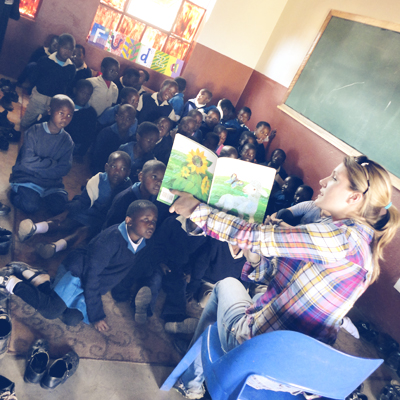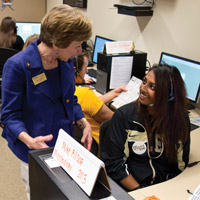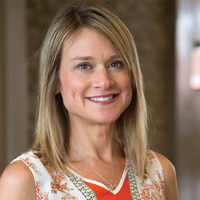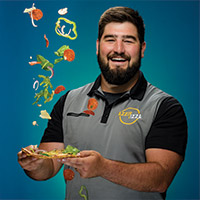10 Days in Swaziland
A Q&A with Alumna Annie Elble

Purdue student Elizabeth Witek reads to a first grade class in the new children’s library that Give Hope, Fight Poverty opened. (Photo provided by Annie Elble)
What can a student expect on a Give Hope, Fight Poverty service-learning trip?
Overall, the trips have common experiences. We tour Baylor's pediatric HIV clinic, volunteer at orphanages and rural schools, deliver food to orphans, and play with children in their homes. Each trip has a specific project that is determined by a combination of what the rural community asks for and what I can get funded. On previous trips, we have installed solar lighting in child-headed homes, planted 100 fruit-bearing trees to provide a sustainable nutrition source, built the first children's library, and installed a computer lab at a rural school. The children served are always the same — we work in the rural communities of Malindza and eLangeni. Although we'd love to be able someday to expand to other communities, we believe it's better to concentrate our efforts in a smaller geographical area so we can make a bigger difference in these orphans' lives.
How many service-learning trips do you plan and participate in each year?
I personally have gone on every single trip since I was a Purdue student in 2008. I have chosen, much to my parents' dismay, to put my career on hold and work part-time as an adjunct professor at Chamberlain College of Nursing so I can continue to take service-learning trips with students during all of the student breaks. Our 10-day trips are offered at Thanksgiving, winter break and spring break, and there's a 40-day program in the summer that is actually four 10-day trips.
The trips are crucial to ensure that our projects are progressing effectively. For instance, we are building the first primary school in a rural community in Malindza village, so it's vital to return often to check construction progress and meet with the Ministry of Education and local community members. It's also great to return often to see our kids. We've added many more children to our group but still work with the original 10 orphans. We are even giving one a college scholarship next year!
How many students have participated in trips since GHFP was founded?
Oh my goodness, it's hard to estimate the number of students who have gone over the years. We've mainly taken Purdue students but we have also had students from Butler University and the University of Wisconsin.
We intentionally keep the groups small with the hope that participants will make intimate connections with the orphans and be inspired to return and remain engaged in our efforts. For each 10-day experience, we take a maximum of four students. Probably 30 students have participated in the program since GHFP started.
Unlike other organizations that use trips like this to generate revenue so they pack them full, we use them as a way of offering students an intimate, hands-on service-learning experience where they will be immersed in these orphans' daily lives. They'll work in their schools. Play cards with them at night in their candlelit, cow dung homes. Take them to movies — often the orphans' first experience at a movie theater. In these smaller settings, the orphans are less intimidated and often will hold hands, sing, hug and even cry with the American students.











